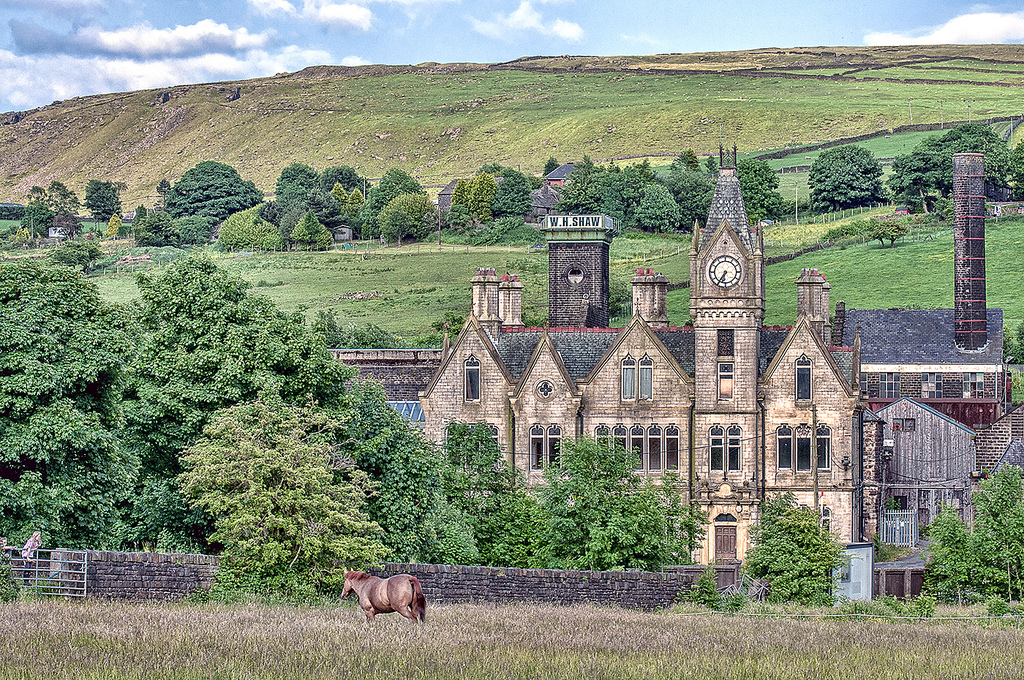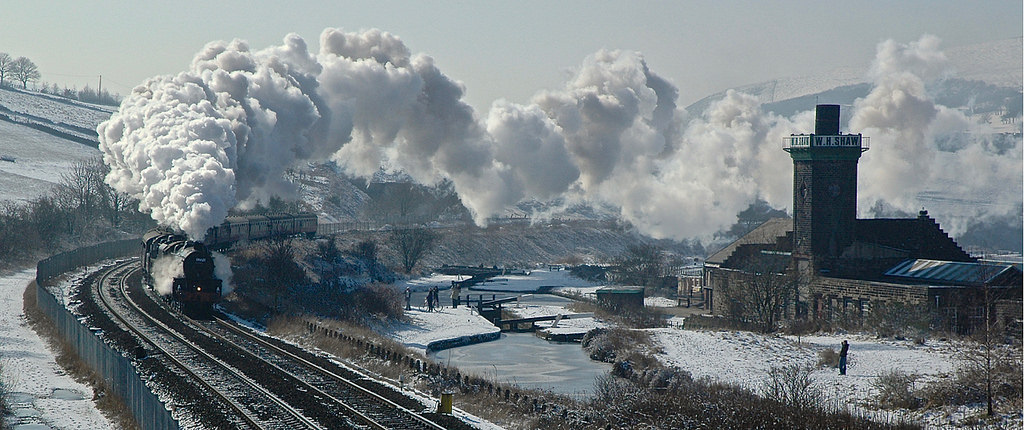Oldham Council set to to delete the Dobcross Loomworks from history and to destroy the Setting of Saddleworth’s landmark clock-tower building
Oldham Council haven't taken any measures to avoid the 'substantial harm' to a Grade 2 Listed building that they have permitted: there has been no attempt to sell the property on the open market to those who might wish to carry out restoration work and preserve the heritage assets.

FACT: The proposed development will cause ‘substantial harm’ to the Setting & Significance of a National Heritage Asset. It doesn't get much worse than this:
- Demolition of the Dobcross Loom Works Complex: this alone causes ‘substantial harm’ to the Grade 2 Listed building.
- Highways developments including car parks + removal of the stone boundary walls that enclose pasture fields to the front.
- Construction of incongruous modern blocks in glass & render that relate poorly to and would be detrimental to the setting of the retained Listed building
- Inappropriate development on adjacent Green Belt pasture (artificial sport pitches & ground engineering) immediately adjacent to the Grade 2 Listed building & Huddersfield Canal.

SETTING
“The wider landscape of the area makes a positive contribution to the setting of the office building. The fields to the immediate west, north and south of the complex and rising farmland to the rear (east) of the building provides a backdrop to the building and the green contrasts with the pale stone. The lack of intensive development around the building, beyond the associated mill buildings, allows the office building to be appreciated from a distance"
[Saddleworth School Environment Statement Chapter 15]

History & Landscape Setting
The Dobcross Loom Works was a world leader in the manufacture of textile machinery and played a nationally and internationally significant role in Britain’s industrial past. The site played a vital role in our Nation's Industrial Revolution & should be acknowledged and conserved. The site is the only surviving large-scale industrial complex associated with manufacture of machinery for the woollen textile industry in the district. Some buildings on the site date from the foundation of the Loom Works, others reflect the evolution of the site and the various industrial processes undertaken there.
The Setting alongside the Huddersfield Canal
The Loom Works and Green Belt make a considerable contribution to the setting of the Huddersfield Canal as a whole, this is especially true when you consider the way that the canal is viewed from a wider area – from the east and west slopes of the Diggle Valley above e.g. from the Pennine Bridleway and Peak District National Park boundary AND how it is experienced by, for example, canal boat users, following the illustrated history of the canal on approach to the Standedge Tunnel
In turn, the setting makes a considerable contribution to the heritage value of the canal as a whole; the canal is not a stand-alone feature to be viewed merely for its engineering interest. It is meant to be viewed as a HERITAGE asset in the context of adjoining related heritage assets which provide illustration, interpretation and understanding. It’s rural and pastoral setting also preserve the special character of the historical relationships.
The NPPF makes it clear that the setting of a heritage asset is "the surroundings in which a heritage asset is experienced”.
